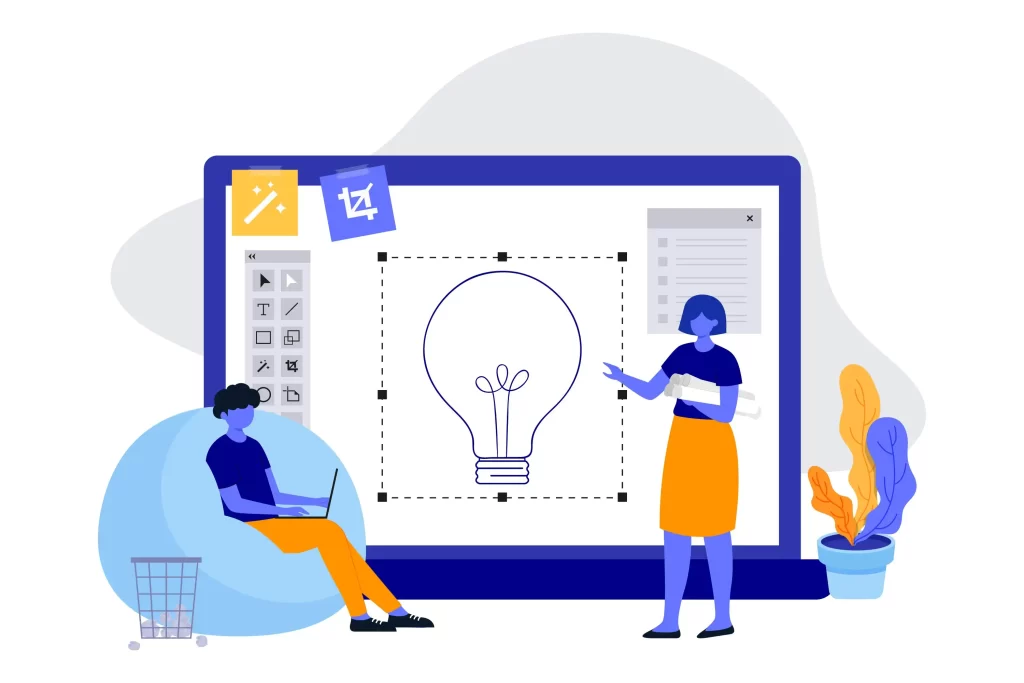- blog11
How to Design a Logo: A Step-by-Step Guide

A logo is more than a mere visual element; it serves as the face of your brand and a vital symbol of your company’s identity. Whether you’re a startup entrepreneur embarking on a new venture or a seasoned designer refining an existing brand, mastering the art of logo design is essential for establishing a memorable brand presence. This guide will take you step-by-step through creating an effective logo, from initial concepts to final design. Additionally, we will delve into various design tools to help you bring your vision to life and explain how to protect your logo with Dibs, ensuring your creative work is secured and your claim is established.
What is a Logo?
A logo is an emblem, symbol, or graphic mark used to represent a business, product, or brand. It represents the company’s identity and ideals in a visual shorthand. Text-based, symbol-based, or a mix of the two are all possible with Logos. A strong logo design is essential since it:
- Creates a strong first impression
- Differentiates you from competitors
- Fosters brand loyalty
- Establishes a professional appearance
A clear understanding of the core function and significance of a logo helps you create one that effectively conveys your company’s message using a company logo design.
How to Design a Logo
Creating a finished product that connects with your audience requires many processes, all essential in the logo design process. Here is a detailed tutorial to assist you in creating a logo:
1. Understand Your Brand: Before you start designing, it’s essential to understand your brand’s core values, mission, and target audience. Ask yourself:
- What does my brand stand for?
- Who is my target audience?
- What message do I want to convey through my logo?
2. Research and Inspiration: Examine the logos of well-known firms in your sector to get ideas. Note what functions effectively and poorly. This research will help you avoid clichés and gain an understanding of current trends.
3. Choose Your Design Style: Decide on the overall look and feel of your logo. Consider styles like:
- Classic
- Modern and minimalist
- Fun and quirky
- Handcrafted
Each style communicates different brand messages.
4. Select Your Logo Type: There are several types of logos to choose from:
- Wordmarks (Logotypes): Uses the company name in a stylized way (e.g., Google).
- Lettermarks (Monograms): Uses initials (e.g., IBM).
- Symbols (Brand Marks): Uses an icon or symbol (e.g., Apple).
- Combination Marks: Combines text and symbol (e.g., Adidas).
- Emblems: Text inside a symbol or icon (e.g., Starbucks).
5. Pick Your Colors: Colors evoke emotions and convey brand attributes. Choose colors that align with your brand’s personality. Remember the psychology of colors:
- Red: Passion, energy
- Blue: Trust, professionalism
- Green: Growth, health
- Yellow: Optimism, creativity
6. Choose Your Fonts: Typography plays a crucial role in logo design. Select fonts that complement your brand style:
- Serif fonts convey tradition and reliability.
- Sans-serif fonts appear modern and clean.
- Script fonts evoke elegance and creativity.
7. Create Your Design: Draft concepts on paper before using digital design software. Use vector graphics tools such as Adobe Illustrator to improve your design. For a quick and simple design process, consider employing an online logo builder like Canva.
8. Test Your Logo: Make sure your logo appears well in a range of formats and sizes. Try it in black and white and on various backgrounds. To improve your design, get input from focus groups or other coworkers.
9. Finalize Your Logo: Once you’re satisfied with the design, create final versions in multiple formats (e.g., JPEG, PNG, SVG) to ensure it can be used across different media.
Logo Design Tools
1. Adobe Illustrator: Adobe Illustrator is the industry standard for logo design. It is a professional vector graphics editor that provides strong tools and adaptability for creating intricate, scalable logos.
2. Canva Logo Maker: The easily navigable logo creator on Canva is an ideal web resource for novices. It offers an easy-to-use drag-and-drop interface together with pre-designed templates.
3. Logo Maker Online Tools: Numerous internet programs for producing logos, such as Looka and LogoMaker, provide quick and simple solutions. Usually, these tools offer editable templates and design components.
Securing Your Logo with Dibs
Once your logo has been designed, it must be secured to avoid illegal use. Even though copyrights and trademarks are popular types of protection, obtaining them may be expensive and time-consuming. Here’s where Dibs enters the picture.
Dibs provides a simple and quick way to secure your creative work. Here’s why you ought to always choose Dibs:
- Immediate Protection: Unlike traditional methods, Dibs provides instant proof of possession with Dibs certificates.
- It is free: It is a free platform for time-stamping your work.
- Focus on Creativity: Spend more time on your creative work and less on paperwork.
You can declare your logo with Dibs as soon as it’s developed, guaranteeing that your rights are upheld at every stage.
Summing up
Creating a logo is essential to building your brand’s identity. You may make a logo that successfully represents your company by knowing your brand, doing extensive research, and adhering to a systematic design process. To make your vision a reality, use design tools like Canva’s logo builder or Adobe Illustrator. Once your logo has been designed, swiftly and effectively safeguard it with Dibs to safeguard your intellectual property.
A well-designed logo can greatly impact your brand’s success in today’s cutthroat industry. Start your logo design journey right now and use Dibs to protect your creative work. By following these guidelines, you can produce a distinctive and powerful logo that successfully communicates your company’s goals and values.
